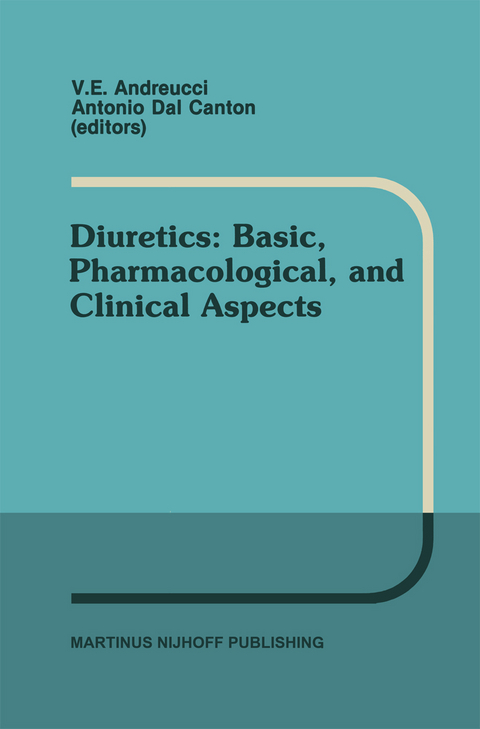
Diuretics: Basic, Pharmacological, and Clinical Aspects
Proceedings of the International Meeting on Diuretics, Sorrento, Italy, May 26–30, 1986
Seiten
2011
|
Softcover reprint of the original 1st ed. 1987
Springer-Verlag New York Inc.
978-1-4612-9227-2 (ISBN)
Springer-Verlag New York Inc.
978-1-4612-9227-2 (ISBN)
The need for adequate means by which to improve urine output is very old. Even in the "Scuola Salernitana", the oldest medieval medical school in Western Europe, about 1000 years ago it was taught how to improve urine output. The list of known "diuretica" included herbs, plants, roots, vegetables, in particular asparagus, fennel and carrot. The first diuretic drugs, however, were mercurial compounds. Thus, calomel, mercurous chloride, was initially used as a diuretic in the sixteenth century by Paracelsus, being one of the ingredients of the so-called "Guy's Hospital pill". But calomel had a cathartic effect so that it was replaced by organic mercurial compounds. These diuretics were clearly toxic. After the discovery of the car bonic anhydrase, in the early 1930s, and the introduction of sulfanilamide as a chemotherapeutic agent, it was observed that this drug was inhibiting carbonic anhydrase in vitro and urinary acidification in vivo thereby causing metabolic acidosis; urine output, however, appeared to increase. Subsequent studies led to the synthesis of more potent analogs, in particular acetazolamide. Studies on car bonic anhydrase inhibitors led to the synthesis of benzothiadiazides which disclosed much less inactivating action on carbonic anhydrase and much more diuretic effect through an inhibition of tubular transport of sodium and chloride. Chlorothiazide was the first member of this class of diuretics. Thiazides are still used in clinical practice.
I. Historical Review..- II. Effects of Diuretics on Ion Transport..- III. Effects of Diuretics on Tubular Transport..- IV. Pharmacokinetics..- V. Endogenous Natriuretic Factors..- VI. Aquaretics..- VII. Diuretics and Hypertension..- VIII. Diuretics and Cardiac Disease.- IX. Diuretics and Renal Disease..- X. Diuretics in Cirrhosis..- XI. Diuretics and Stone Formation..- XII. Side Effects of Diuretic Therapy..- XIII. Effects of Diuretics on Water and Electrolyte Excretion..- XIV. Diuretics in Renal Investigation..- XV. Effects of Diuretics on Renal Function..- XVI. Diuretics and Prostaglandins..
| Erscheint lt. Verlag | 22.9.2011 |
|---|---|
| Reihe/Serie | Developments in Nephrology ; 18 |
| Zusatzinfo | LVI, 576 p. |
| Verlagsort | New York, NY |
| Sprache | englisch |
| Maße | 155 x 235 mm |
| Themenwelt | Medizinische Fachgebiete ► Innere Medizin ► Kardiologie / Angiologie |
| Medizinische Fachgebiete ► Innere Medizin ► Nephrologie | |
| Medizin / Pharmazie ► Medizinische Fachgebiete ► Pharmakologie / Pharmakotherapie | |
| ISBN-10 | 1-4612-9227-1 / 1461292271 |
| ISBN-13 | 978-1-4612-9227-2 / 9781461292272 |
| Zustand | Neuware |
| Haben Sie eine Frage zum Produkt? |
Mehr entdecken
aus dem Bereich
aus dem Bereich
in Fällen, Fragen und Antworten
Buch | Softcover (2024)
Urban & Fischer in Elsevier (Verlag)
CHF 124,60
Diagnostik und interventionelle Therapie | 2 Bände
Buch (2024)
Deutscher Ärzteverlag
CHF 489,95
Buch | Softcover (2023)
Urban & Fischer in Elsevier (Verlag)
CHF 61,60


